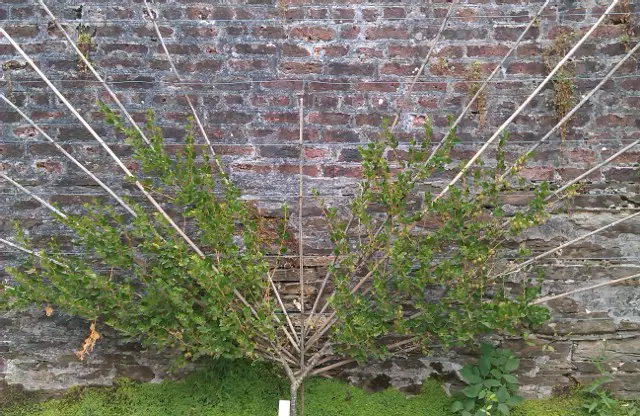Last Updated on April 10, 2024 by Real Men Sow
I don’t know why, but soft fruit bushes aren’t something I’ve talked much about on Real Men Sow. On my allotment, I had lots of fruit bushes. There were 3 blackcurrants, 5 gooseberries, a redcurrant, and a loganberry. But this time, my luck as the best man at a recent wedding got me nice fruit plants.
Why Should You Buy Fruit Bushes?
Fruit bushes are a great investment to save you money right in the garden. Soft fruit is pricey in the shops so some good yields will soon recover your costs. They might take two years to fruit properly, but they’ll often live for 2 decades.
You won’t just save money by eating the fruit as it comes, either. Jams cost pennies when using homegrown fruit. Berries freeze well, which shaves good money off shopping winter trips when the fruit is out of season.
When Should You Buy Fruit Bushes?
The optimum time for buying and planting fruit bushes is the dormant period between November and February, but November is best as the soil is warmer.
Although planting time is a few months away, now is the perfect time to plan where you want to locate your bushes and how you’d like to grow them.
How to Plant Fruit Bushes in Your Garden?
Planting Instructions
When planting a bush, I dig a hole big enough to take the root of the plant and add a decent spadeful of organic matter such as compost or manure. There will be an original soil mark on the plant –try not to plant the bush deeper than this mark. Water in and then sprinkle a mulch around the base.
Make sure the plants are weeded well and watered regularly in the first summer. Mulching during this time helps keep moisture in and weeds down.
Choose a Good Location
Location is important when planting your bushes, as the full sun will give you better fruit. If you have the space, keeping your bushes together is also a good tactic as they’ll be easier to net or build a fruit cage around should the local bird population take a fancy to the berries.
I had plenty of room at the plot, so finding suitable space for my fruit bushes was easy. However, in my garden things are different, and finding likely homes for the new additions has left me scratching my head.
Pick a Small Space for Your Fruit Bushes
Lots of thought is required when planting fruit in a small space. Generally, you only plant them once, so try and pick a good place. There are solutions if space is at a premium though.
I think a well-shaped fruit bush is very attractive, so there is no reason why they can’t be planted in decorative borders and beds. I planted a blackcurrant bush in one of my beds, and it looks handsome. The leaves also give off a gorgeous scent.
Fruit Bushes Grow Upwards
Training fruit bushes is a good option for small spaces. I trained my loganberry up the shed at the allotment and I wish I’d done that in my garden with the gooseberries. Instead, I plonked them bang in the middle of my patch, taking up useful space. A fan trained bush, like the gooseberry in the picture below (taken by my dad on a recent trip to Cornwall) is not only a very attractive use of space but an efficient one too.
This method is done over a couple of seasons, but can be done against walls, fences, sheds or even against a custom made support.
Fruit bushes are great things to grow in gardens and on allotments. Initially, the outlay can be quite expensive (especially if you buy 2-year-old plants) but once established the return is high. On my last year on the allotment, I harvested 6lbs of gooseberry from just one bush.




I recently bought a loganberry and tayberry. I have been eating what I thought were raspberries but couldn’t work out why they tasted different – it turns out I had bought a loganberry thinking it was a raspberry bush – they look very similar (should’ve gone to Specsavers)! Soft fruit bushes are certainly a great addition to the garden but as you say they do take up a lot of space – so I have been training my gooseberry bush as a standard.
Hey Elaine – they do look similar but taste very different. I reckon loganberry possibly makes the better jam though…
What do loganberries taste like?? Never seen or heard of one in Australia. Tayberries???
Also have never tasted a gooseberry but thanks to Willy Wonka – I have heard of them. 🙂
Hey Gemma,
They’re like raspberries, but tarter. I like tart fruit in jam, so love loganberry jam.
I’ve never tasted tayberries though, your comment has inspired to try and hunt some down to try.
Gooseberries are either green or red, depending on whether they’re cookers (green) or eaters (red). They’re tarter too. The cookers are very nice stewed with some sugar, like a compote.
I love using fruit cages in my garden because it protects my beautiful raspberries from the wildlife and my bunny rabbits who will eat whatever they can get their paws on. I bought a large fruit cage from twowests and it’s done a very good job or protecting my fruit which I’m hoping will floruish! Don’t worry, I dont neglect my wildlife, but I have to be careful with what my little fluffies eat! Check out the link